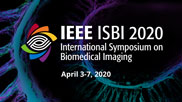Collection:

Restoring the tissue reflectivity function (TRF) from ultrasound (US) images is an extensively explored research field. It is well-known that human tissues and contrast agents have a non-linear behavior when interacting with US waves. In this work, we investigate this non-linearity and the interest of including harmonic US images in the TRF restoration process. Therefore, we introduce a new US image restoration method taking advantage of the fundamental and harmonic components of the observed radiofrequency (RF) image. The depth information contained in the fundamental component and the good resolution of the harmonic image are combined to create an image with better properties than the fundamental and harmonic images considered separately. Under the hypothesis of weak scattering, the RF image is modeled as the 2D convolution between the TRF and the system point spread function (PSF). An inverse problem is formulated based on this model able to jointly estimate the TRF and the PSF. The interest of the proposed blind deconvolution algorithm is shown through an in vivo result and compared to a conventional US restoration method.
- IEEE MemberUS $11.00
- Society MemberUS $0.00
- IEEE Student MemberUS $11.00
- Non-IEEE MemberUS $15.00
Videos in this product
Blind Deconvolution of Fundamental and Harmonic Ultrasound Images
Restoring the tissue reflectivity function (TRF) from ultrasound (US) images is an extensively explored research field. It is well-known that human tissues and contrast agents have a non-linear behavior when interacting with US waves. In this work, we investigate this non-linearity and the interest of including harmonic US images in the TRF restoration process. Therefore, we introduce a new US image restoration method taking advantage of the fundamental and harmonic components of the observed radiofrequency (RF) image. The depth information contained in the fundamental component and the good resolution of the harmonic image are combined to create an image with better properties than the fundamental and harmonic images considered separately. Under the hypothesis of weak scattering, the RF image is modeled as the 2D convolution between the TRF and the system point spread function (PSF). An inverse problem is formulated based on this model able to jointly estimate the TRF and the PSF. The interest of the proposed blind deconvolution algorithm is shown through an in vivo result and compared to a conventional US restoration method.
 Cart
Cart Create Account
Create Account Sign In
Sign In
